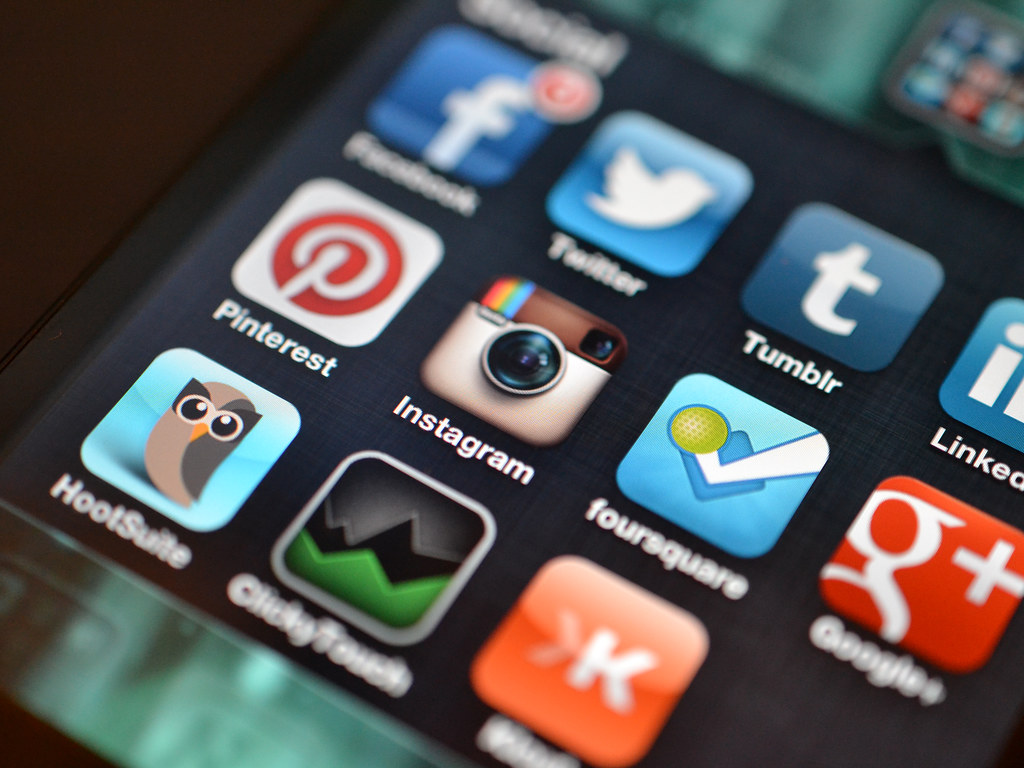
In our increasingly hyper-connected world, the constant ping of notifications and the endless stream of content have become an almost inescapable part of daily life. What often starts as a benign way to stay informed or connected can quickly spiral into a pervasive digital dependency. It’s a challenge that spares no one, not even the most disciplined among us, and its ironies can be particularly sharp for those striving for peak performance.
Indeed, even a CEO and publisher of a magazine dedicated to helping ambitious people achieve their highest potential found himself caught in the relentless cycle of doomscrolling at 2 a.m. What began as innocent checks of social media between meetings or a quick glance at industry news during lunch escalated into deep dives down rabbit holes of conspiracy theories, outrage content, and clickbait. These digital encounters, designed to hijack the brain’s reward system, delivered dopamine hits but also unwelcome companions: anxiety, fractured focus, and agitated nights – textbook symptoms of social media addiction.
This isn’t just a personal failing; it’s a global crisis. Estimates suggest that as many as 210 million people worldwide are grappling with social media addiction. The consequences are far-reaching, encompassing increased isolation, a greater likelihood of anxiety and depression, disrupted sleep, diminished work performance, reduced empathy, and decreased physical activity. For high-achievers, the trap is even more insidious, as the very drive for the next edge or insight is precisely what these platforms exploit, leaving them drained and unfocused. Breaking free, therefore, isn’t just an option; it’s an imperative for well-being and peak performance. The good news is, freedom is within reach, not through sheer willpower, but through carefully constructed systems.
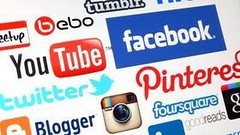
1. **Recognizing the Problem: The Silent Pandemic of Social Media Addiction**The pervasive nature of social media addiction has earned it the moniker of a ‘silent pandemic,’ subtly eroding our well-being and productivity. The numbers paint a stark picture: one study reported that a staggering 56% of users admit to feeling anxious without access to their social media profiles. This widespread reliance on digital platforms has profound implications, particularly for leaders and entrepreneurs who often mistake their constant engagement for productive networking or essential market research.
This mistaken belief allows digital addiction to masquerade as diligence, making it even more dangerous. Leaders might justify their endless scrolling as a necessary evil, failing to recognize it as a genuine threat to their cognitive performance and capacity for sound decision-making. The constant input of information, while seemingly keeping one informed, can actually hinder deep thought and strategic planning, leaving individuals in a perpetual state of partial attention.
The comparison to substance addiction is not hyperbole; it is a clinical reality. As comedian Bill Maher eloquently put it, a quote highlighted by Cal Newport in his book *Digital Minimalism*, “The tycoons of social media have to stop pretending that they’re friendly nerd gods building a better world and admit they’re just tobacco farmers in T-shirts selling an addictive product to children. Because, let’s face it, checking your ‘likes’ is the new smoking.” This powerful analogy underscores the engineered addictiveness of these platforms, designed to keep users hooked.
Indeed, the scientific community echoes this sentiment. Research published in *Cyberpsychology, Behavior, and Social Networking* revealed that a significant portion of users meet clinical diagnostic criteria for addiction: 24% of TikTok users and 28% of Instagram users studied fall into this category. These statistics serve as a wake-up call, emphasizing that social media addiction is not merely a bad habit but a serious condition with profound impacts on mental health and overall functionality, demanding a structured approach to intervention.

2. **Why High-Achievers Are Especially Prone to Digital Addiction**High-achievers, with their inherent drive and ambition, often find themselves uniquely vulnerable to the digital addiction trap. Their very strengths—the relentless pursuit of knowledge, the competitive spirit, and the quest for validation—are precisely the mechanisms that social media platforms are engineered to exploit. This susceptibility means that what appears to be a productive engagement can quickly devolve into a draining cycle of distraction and anxiety, particularly for leaders and entrepreneurs.
One significant vulnerability is what can be termed ‘information addiction masquerading as research.’ Driven by a desire to stay informed, network, or research market trends, high-achievers can easily fall into the belief that endless scrolling is productive. However, as Cal Newport aptly observes, “an endless bombardment of news and gossip and images has rendered us manic information addicts,” creating a constant, underlying hum of anxiety rather than genuine insight. This continuous stream of data overwhelms rather than enlightens, hindering deep strategic thought.
Another powerful factor is ‘FOMO amplified by competitive nature.’ High-achievers are inherently competitive, always seeking an edge. Social media masterfully exploits this trait by generating artificial urgency around every update, every trend, and every move made by competitors. This constant perceived pressure to be ‘in the know’ transforms checking social media into a nervous twitch. Newport warns that this “shatters uninterrupted time into shards too small to support the presence necessary for an intentional life,” severely undermining the focused work essential for true achievement.
The craving for ‘validation seeking despite success’ also plays a crucial role. Even the most successful leaders are not immune to the human need for external approval. Tech companies leverage this by encouraging behavioral addiction through intermittent positive reinforcement, such as ‘likes’ and engagement metrics. Newport refers to these as “virtual slot machines,” designed to deliver unpredictable rewards that compel users to keep scrolling, chasing the next hit of social approval, regardless of their real-world accomplishments.
Finally, the ‘always-on mentality’ prevalent among leaders creates a perfect storm for digital distraction. James Clear, author of *Atomic Habits*, identifies mindless phone scrolling as “the greatest interruption” to productivity. For individuals who pride themselves on constant availability and continuous learning, the line between productive engagement and compulsive checking blurs. This perceived diligence, rooted in the desire to be always connected and responsive, ultimately leads to a fractured focus and diminished capacity for the deep work that truly drives success.
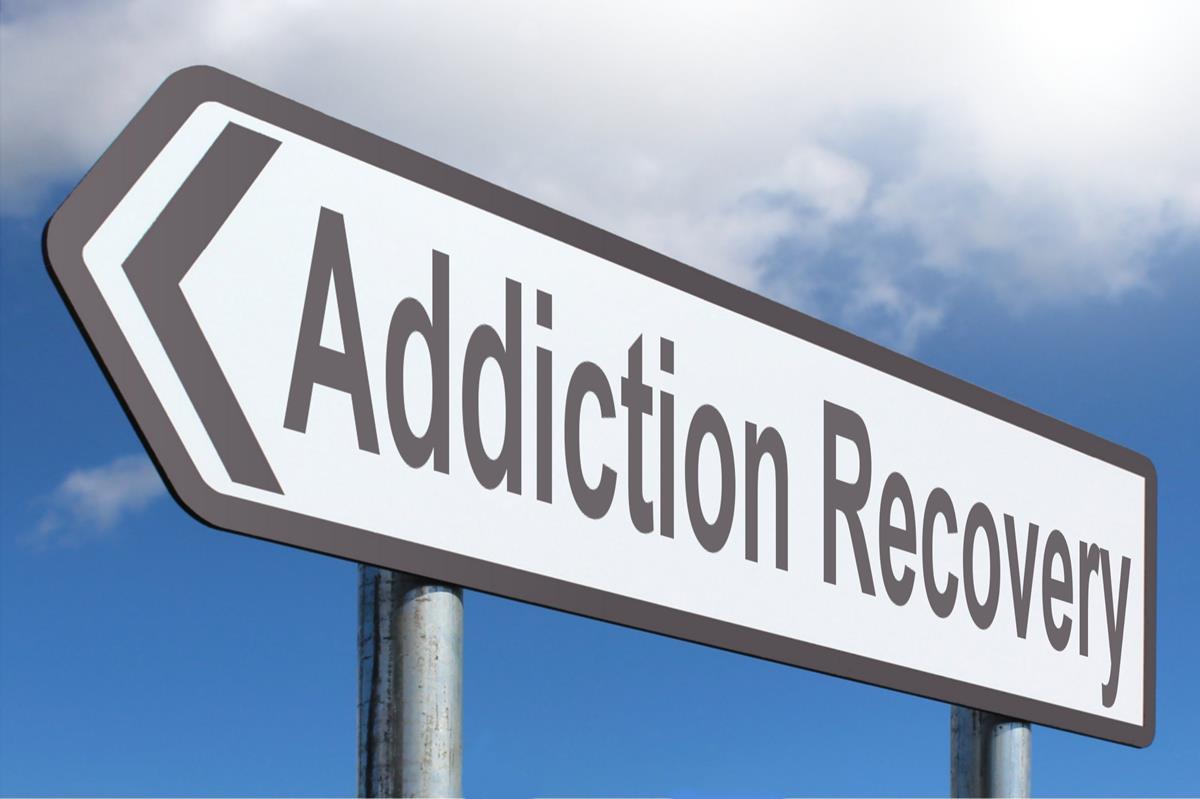
3. **Identifying Your Digital Addiction Patterns: Physical Warning Signs**Recognizing a digital addiction often begins with an honest assessment of physical symptoms, which can be just as telling as any psychological indicator. These signs are often the body’s subtle, or not so subtle, alerts that our relationship with technology has crossed into problematic territory. Acknowledging these physical cues is a critical first step in breaking free from the cycle of endless scrolling and digital dependency, moving past denial and towards tangible change.
One of the most common and immediate physical warning signs is the habit of checking your phone within minutes of waking up. This instantaneous grab for the device signals a deep-seated reliance, indicating that the digital world is the very first thing your brain seeks to engage with each day. It bypasses any opportunity for mindful awakening or setting intentional daily goals, immediately immersing you in external stimuli and others’ agendas rather than your own.
Another telling physical symptom is experiencing phantom vibrations from your phone. This phenomenon, where you feel your phone vibrating or ringing when it isn’t, highlights a heightened state of anticipation and anxiety surrounding notifications. Your brain has become so conditioned to expect digital input that it manufactures these sensations, demonstrating the profound neurological rewiring that occurs with excessive device use and constant vigilance for social media engagement.
The anxiety that grips you when your phone battery dies or you lose signal is a clear red flag. This intense discomfort or panic indicates a significant psychological dependence on your device for connection, information, and a sense of security. It reveals how deeply integrated the phone has become into your sense of self and ability to function, extending beyond mere convenience to a state of distress when access is interrupted or completely unavailable.
Furthermore, persistent neck and shoulder pain, often referred to as “tech neck,” is a direct physical consequence of prolonged periods spent hunched over devices. This chronic discomfort isn’t just an annoyance; it’s a structural warning from your body about the strain imposed by unhealthy posture during screen time. Coupled with sleep disruption from late-night scrolling, where the blue light and stimulating content interfere with melatonin production and restful sleep, these physical symptoms cumulatively underscore the tangible and detrimental impact of digital addiction on your overall health and well-being.

4. **Identifying Your Digital Addiction Patterns: Cognitive Warning Signs**Beyond the physical manifestations, digital addiction deeply impacts our cognitive functions, subtly eroding our mental agility and capacity for deep thought. These cognitive warning signs often go unnoticed initially, masked by the illusion of productivity or constant information intake. However, recognizing them is paramount, as they directly undermine our ability to concentrate, retain information, and engage in the sustained mental effort necessary for complex problem-solving and true innovation.
One prominent cognitive symptom is difficulty concentrating on single tasks for extended periods. The constant habit of switching between apps, feeds, and notifications trains our brains for superficial, rapid-fire engagement rather than focused, prolonged attention. This fragmentation of attention makes it challenging to immerse ourselves in demanding work, read complex articles, or engage in meaningful conversations, as our minds are perpetually primed for the next digital interruption, thereby significantly diminishing our ability to enter states of deep work or flow.
Mental fatigue, despite not engaging in mentally demanding work, is another critical indicator. The brain expends considerable energy processing the continuous influx of notifications, visual stimuli, and fragmented information presented by social media. This ‘context switching’ and shallow processing lead to exhaustion, even when the content itself is trivial. Instead of feeling refreshed after a break, individuals may feel more drained, a clear sign that their digital habits are depleting their cognitive reserves rather than recharging them.
Decreased attention span for books, articles, or deep conversations directly follows from this rewired cognitive processing. Our brains become accustomed to the instant gratification and rapidly changing stimuli of online content, making the slower, more demanding pace of traditional reading or in-depth dialogue feel tedious and unrewarding. This erosion of attention span impacts learning, critical thinking, and the quality of our human interactions, as we struggle to maintain focus on anything that doesn’t offer immediate, novel stimulation.
Finally, experiencing racing thoughts or feeling mentally “wired” even when tired points to an overstimulated nervous system. The constant exposure to information, combined with the anticipation of new notifications, keeps the brain in a perpetual state of alert. This prevents mental quietude and genuine rest, leading to a feeling of being ‘on’ all the time, even when the body is exhausted. This persistent state of mental agitation significantly impairs sleep quality, emotional regulation, and overall cognitive health, highlighting the urgent need for intervention to restore mental balance.
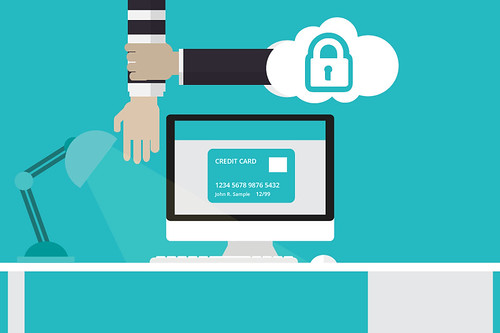
5. **Identifying Your Digital Addiction Patterns: Emotional and Behavioral Warning Signs**The impact of digital addiction extends deeply into our emotional landscape and manifests in distinct behavioral patterns, often causing distress and damaging relationships. These signs serve as crucial indicators that our interaction with technology is no longer serving us but rather controlling our feelings and actions. Being honest about these emotional and behavioral shifts is essential for initiating a meaningful break from the endless scroll and reclaiming agency over our lives.
Emotionally, one might observe increased irritability when interrupted while on your phone. This short temper signals that your focus on the device is paramount, and any disturbance is perceived as a threat to that engagement, indicating a deep immersion that borders on obsession. Furthermore, constantly comparing yourself to others based on their curated social media posts can trigger feelings of inadequacy, envy, and dissatisfaction. The highly filtered and often unrealistic portrayal of others’ lives fosters unreasonable expectations, leading to a detrimental impact on self-esteem and overall mood.
Mood swings correlated with social media engagement are another telling emotional sign. Your emotional state might fluctuate depending on the number of ‘likes’ received, the comments posted, or the perceived popularity of your content. This external validation-seeking creates an emotional roller coaster, where happiness and sadness are dictated by digital metrics rather than genuine life experiences. Following intense periods of scrolling, many report feeling empty or unsatisfied, highlighting the hollow nature of these digital rewards and their inability to provide lasting fulfillment.
Behaviorally, one of the most common indicators is automatically reaching for your phone during any moment of potential boredom. This impulse bypasses opportunities for introspection, observation, or engaging with the immediate environment, making the phone a default distraction. Checking social media while in conversations with others is a direct sign of disrespect and divided attention, signaling that the digital world holds more sway than the real-life interaction unfolding before you, hindering the development of deep and meaningful connections.
Using social media as a procrastination tool is another prevalent behavioral pattern. Instead of tackling important tasks, individuals defer responsibilities by escaping into the digital realm, creating a cycle of guilt and delayed productivity. Perhaps the most alarming behavioral sign is lying to yourself or others about how much time you spend on your phone, indicating an awareness of the problem coupled with an inability or unwillingness to confront it. Recognizing these patterns is the first step towards a stoic approach, as Ryan Holiday, author of *The Obstacle Is the Way*, suggests: “Focus on the moment, not the monsters that may or may not be up ahead,” shifting focus from anxiety-driven scrolling to intentional presence.

6. **The ‘Systems Over Willpower’ Approach: James Clear’s Framework**Once the problem of digital addiction is recognized, the immediate impulse for many is to rely on willpower—to simply “use less.” However, this approach often falls short because addiction, by its very nature, rewires the brain’s reward system, making sheer determination an insufficient tool against deeply ingrained habits. The critical shift, therefore, lies in adopting a systematic approach that makes the desired behavior easier and the undesired behavior harder, fundamentally altering the environment in which our habits thrive or falter.
James Clear’s *Atomic Habits* framework offers a powerful and practical structure for systematically breaking digital addiction. Clear emphasizes that we don’t rise to the level of our goals; we fall to the level of our systems. This means that instead of fighting a constant battle against temptation, we should design our environment and routines in a way that naturally steers us towards healthier digital practices. The framework provides clear, actionable principles that address the core mechanics of habit formation and cessation, making it ideal for combating the insidious nature of social media dependency.
The essence of this framework revolves around four laws of behavior change, reframed to target undesirable habits. For breaking digital addiction, these translate into making bad habits invisible, unattractive, difficult, and unsatisfying. Each of these principles offers a lever for change, moving beyond vague intentions to concrete, implementable actions that create friction for the unwanted behavior while smoothing the path for more beneficial alternatives. This holistic approach acknowledges the complexity of addiction and offers a robust pathway to sustained digital wellness.
By focusing on system design rather than brute-force willpower, individuals can create a sustainable shift in their technology use. This isn’t about deprivation but about intentional living and reclaiming control. It’s about recognizing that our environment is a powerful determinant of our habits, and by consciously shaping that environment, we can effectively mitigate the magnetic pull of social media. The subsequent strategies will delve into the practical application of these principles, offering concrete steps to dismantle digital addiction, one systematic change at a time.
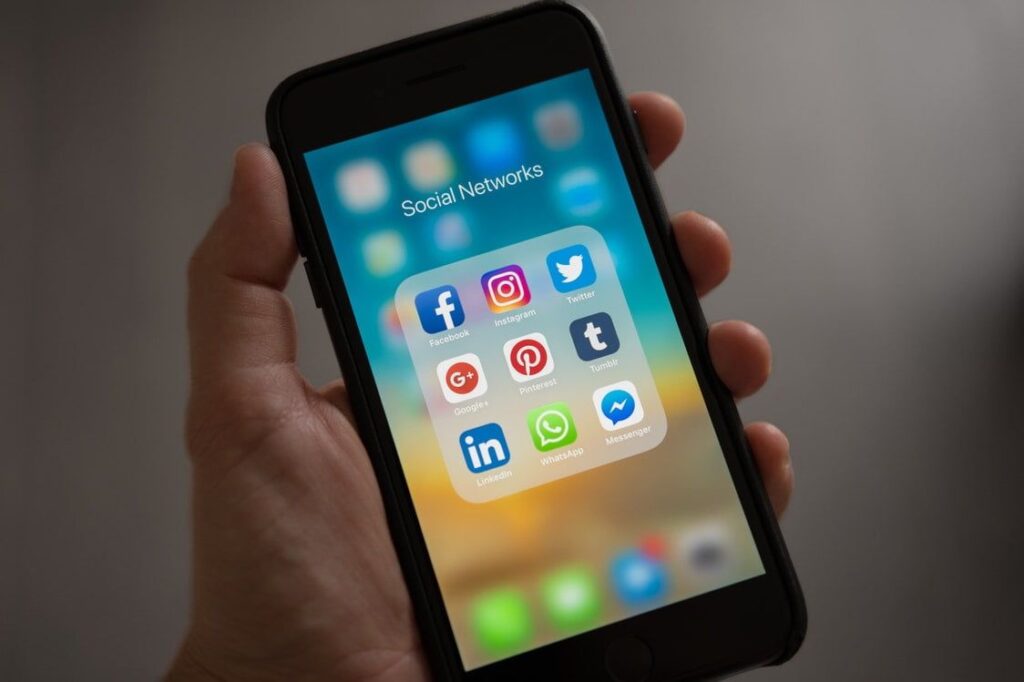
7. **Making Bad Habits Invisible: Practical Steps for Digital Detox**The first powerful strategy in James Clear’s framework for breaking digital addiction is to make bad habits invisible. This principle acknowledges that our environment plays a crucial role in triggering our habits; if a temptation isn’t readily apparent, it’s far less likely to be acted upon. By strategically removing cues for social media use, we can significantly reduce the mental effort required to resist the urge to scroll, creating a much-needed breathing room for our minds and fostering intentional engagement.
One of the most effective steps is to remove social media apps from your phone’s home screen. Clear explains, “If I have my phone in front of me, I’ll check it every three minutes just because it’s there.” The mere visual presence of an app icon acts as a constant trigger. By moving social media apps off your home screen and burying them deep within folders, or even in less accessible parts of your phone, you introduce a layer of friction. This small inconvenience—the need to search or navigate multiple folders—can be enough to disrupt the automatic impulse to open an app, making the habit less automatic and more deliberate.
Another impactful way to make bad habits invisible is to use grayscale mode on your smartphone. The vibrant colors and flashing red notification badges on apps are meticulously designed to attract attention and can even trigger dopamine responses, drawing you in. Switching your phone to grayscale removes these compelling visual cues, making the device less visually appealing and, consequently, less addictive. The world through a monochrome screen instantly loses much of its manufactured allure, reducing the subconscious pull to engage with content that relies heavily on vivid imagery.
Furthermore, creating phone-free zones is a practical application of Clear’s “one space, one use” principle. This involves designating specific areas where phones are simply not allowed. For example, establishing your home office as a phone-free zone during deep work sessions ensures that your workspace is solely for focused productivity, free from digital distractions. Similarly, making the bedroom a phone-free sanctuary supports better sleep hygiene. By clearly defining these boundaries, you remove the opportunity for digital distractions in critical areas of your life, making it much easier to concentrate, rest, and engage with the present moment without the constant temptation of your device.
Following the principle of making bad habits invisible, the next step in systematically breaking digital addiction is to make those habits unattractive. Addiction often thrives on a distorted perception of its benefits, where immediate gratification obscures long-term costs. By consciously shifting our internal narrative and exposing the genuine drawbacks of excessive social media use, we can fundamentally alter its appeal and create a strong intrinsic motivation for change.
To begin this reframing, truly understand the profound costs involved. The New York City Health Department declared social media a ‘threat to youth mental health’ in 2024, and the U.S. surgeon general has called for greater transparency from tech companies. This isn’t merely about lost time; it’s about the erosion of cognitive capacity, emotional regulation, and even the quality of your decision-making. Recognizing these severe impacts transforms social media from a harmless pastime into a genuine threat to your well-being and performance.
Cal Newport, in *Digital Minimalism*, offers a powerful perspective: view social media companies as ‘attention merchants’ rather than benevolent technology innovators. He highlights that the addictive properties of these platforms are not accidents, but ‘carefully engineered design features.’ This demystifies the allure, empowering you to see the deliberate manipulation behind your compulsive engagement and recognize that you are the product, not the customer.
When you internalize these truths, the ‘glamour’ of endless scrolling quickly fades. The fleeting dopamine hits are exposed as manipulative tactics, and the perceived benefits—like staying informed or connected—are dwarfed by the documented detriments to your mental health and productivity. This cognitive shift, from attraction to aversion, is a critical lever for dismantling digital dependency and reclaiming your precious attention.
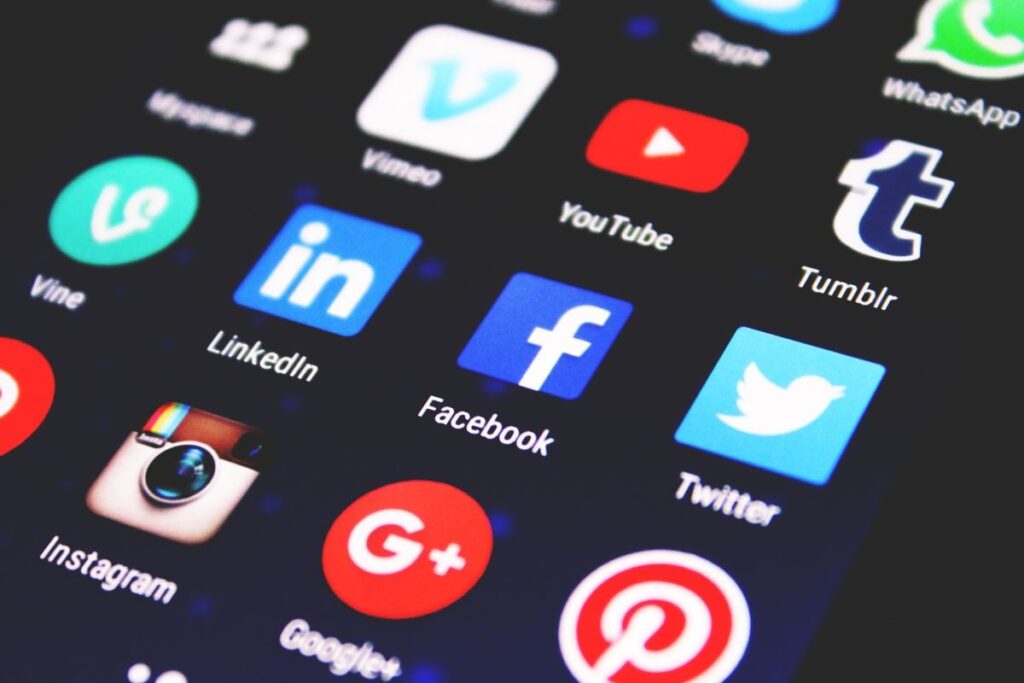
8. **Making Bad Habits Unattractive: Exposing the True Cost of Social Media**Once we’ve made bad habits invisible and unattractive, the next strategic move in James Clear’s framework is to make them difficult. This principle focuses on creating deliberate friction points between you and the undesirable behavior, thereby disrupting the automaticity of compulsive scrolling. By consciously designing your environment to introduce inconvenience, you force a moment of reflection, making it less likely for mindless engagement to occur.
One of the most drastic, yet highly effective, methods to make bad habits difficult is to delete social media apps entirely from your phone. As the CEO and publisher of *SUCCESS®* magazine shared, during their recovery period, they deleted all social media apps. This meant that if they wanted to check a platform, they had to use a web browser, log in manually, and navigate through a clunky mobile interface. This multi-step process often provides enough friction to deter the impulsive urge to scroll, effectively breaking the cycle of instant access.
Beyond outright deletion, utilizing app timers and restrictions is a practical way to introduce difficulty. Most smartphones offer built-in features that allow you to set daily time limits for specific applications. Once you hit that predetermined limit, the app becomes inaccessible for the remainder of the day. This external control mechanism acts as a firm boundary, preventing you from unknowingly slipping into extended, unproductive scrolling sessions. It’s a powerful tool for self-regulation without relying solely on willpower.
Furthermore, consciously changing your physical environment can significantly increase the difficulty of accessing social media. Clear emphasizes, “The basic idea here is you want fewer steps between you and the desired behavior and more steps between you and the undesired behavior.” This might mean charging your phone in a different room overnight, leaving it out of reach during focused work, or even storing it in a drawer when you’re spending time with family. By physically separating yourself from the device, you create crucial distance, making the act of engaging with social media less convenient and more deliberate.
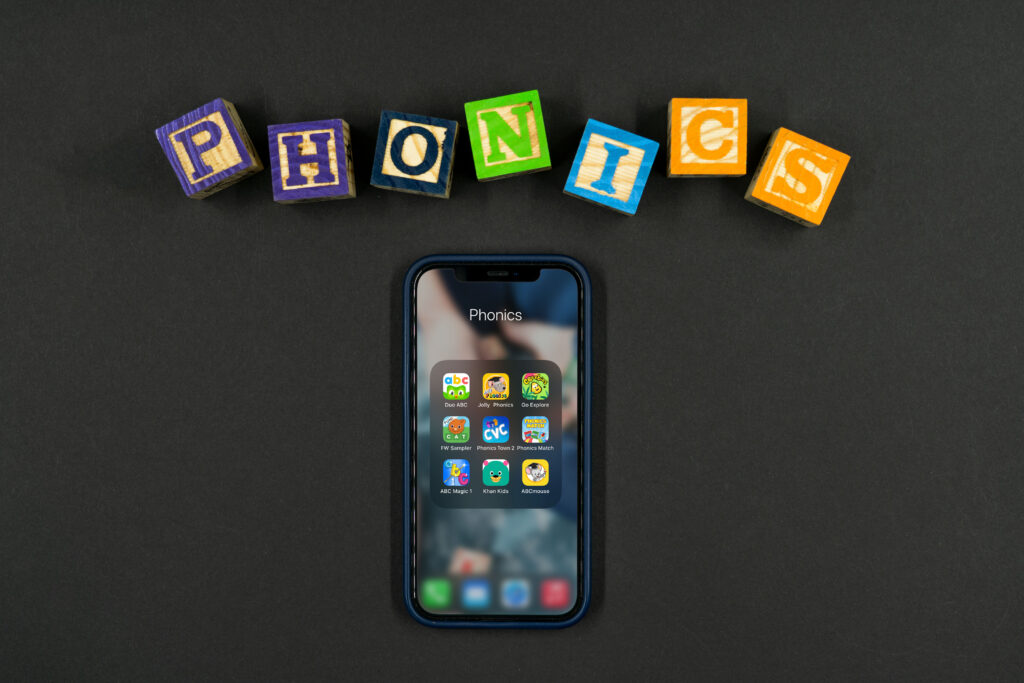
9. **Making Bad Habits Difficult: Creating Friction for Compulsive Scrolling**The final component of James Clear’s behavior change framework is to make bad habits unsatisfying. This principle is about ensuring that the act of engaging with social media has clear, often immediate, negative feedback or a recognized lack of genuine fulfillment. For a habit to truly break, there must be a consequence, a visible detriment, or a stark realization that the reward system is fundamentally flawed and ultimately unsatisfying.
A highly effective way to make digital habits unsatisfying is to track your usage rigorously. Your phone’s built-in screen time tracking features can be an eye-opening tool. Most people significantly underestimate their screen time, often by two to three hours per day. Confronting the cold, hard numbers—seeing the cumulative hours dedicated to shallow engagement—can be a profoundly unsatisfying and motivating realization. This undeniable evidence serves as a powerful catalyst for change, transforming abstract guilt into concrete data.
Another powerful strategy is public accountability. Sharing your digital detox goals with others, whether it’s your executive team, family, or a close friend, significantly increases the social cost of failure. When others are aware of your commitment, backing down becomes harder, as it involves a potential loss of credibility or perceived failure. This external pressure can be a strong deterrent against backsliding, reinforcing your resolve by adding a layer of social consequence to your actions.
Ultimately, the inherent unsatisfying nature of social media often reveals itself after prolonged use. Many individuals report feeling empty, drained, or even more anxious after intense periods of scrolling, despite the initial dopamine hits. This hollow reward system, coupled with constant comparison to others’ curated lives, rarely provides lasting fulfillment. By consciously acknowledging and internalizing this feeling of emptiness, you effectively make the habit inherently unsatisfying, thus weakening its grip.
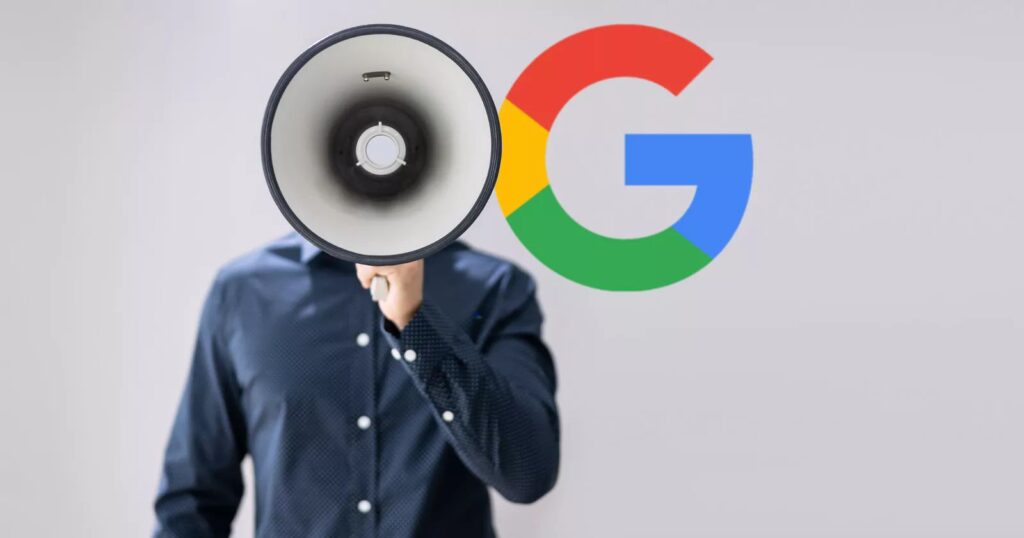
10. **Making Bad Habits Unsatisfying: Tracking Usage and Accountability**Once you’ve successfully dismantled old digital habits, the critical next phase is to fill that newly created void with meaningful, purposeful engagement. Simply removing social media without replacing it with something more fulfilling often leads back to old patterns. As Cal Newport wisely states, “Digital minimalists see new technologies as tools to be used to support things they deeply value—not as sources of value themselves.” The key is to intentionally cultivate activities that provide genuine satisfaction and contribute positively to your life.
For those grappling with ‘information addiction,’ replacing the endless feed with curated, high-quality sources can be transformative. Instead of mindlessly scrolling through a barrage of news and gossip, subscribe to two or three reputable newsletters that deliver synthesized, valuable information weekly. Furthermore, embrace physical books and magazines. Newport notes that “idleness is not just a vacation, an indulgence or a vice; it is as indispensable to the brain as vitamin D is to the body.” Reading physical books forces you to slow down, engage deeply, and allows for genuine reflection and knowledge absorption, a stark contrast to fragmented online consumption.
To truly address the craving for ‘social connection,’ prioritize real-world interactions over digital surrogates. Holly Shakya, Ph.D., an assistant professor of global public health, warns, “Where we want to be cautious is when the sound of a voice or a cup of coffee with a friend is replaced with ‘likes’ on a post.” Instead, make it a point to schedule actual phone calls, video chats, or, even better, in-person coffee meetings. Sociologist Sherry Turkle adds that “Face-to-face conversation is the most human—and humanizing—thing we do,” emphasizing its role in developing empathy and deeper relationships.
Finally, for the need for ‘dopamine and stimulation,’ seek healthier, sustainable alternatives. Physical exercise is an excellent way to generate natural dopamine while simultaneously improving cognitive function and reducing stress. Engaging in creative hobbies, such as music, art, or crafts, provides the satisfaction of skill development and progress, a far more enduring reward than fleeting digital engagement. Additionally, regular exposure to nature and solitude helps to address what Newport terms “solitude deprivation,” allowing for quiet reflection and mental restoration, fostering genuine well-being.

11. **The Replacement Strategy: Filling the Void with Purposeful Engagement**In a world increasingly saturated with digital distractions, cultivating a stoic mindset offers a robust mental framework for maintaining digital wellness. Stoicism, as articulated by thinkers like Ryan Holiday, emphasizes focusing on what you can control—your responses and actions—rather than being swayed by external stimuli. Holiday’s maxim, “Choose not to be harmed—and you won’t feel harmed. Don’t feel harmed—and you haven’t been,” applies perfectly to social media triggers: you cannot control what others post, but you have absolute control over your reaction and engagement.
This philosophy highlights that in an era of constant information bombardment, sustained focus becomes an invaluable asset. Holiday keenly observes in *Discipline Is Destiny*, “In a world of distraction, focusing is a superpower.” For leaders, this ability to maintain sustained attention while competitors fragment their focus across multiple platforms provides an enormous competitive advantage. It’s about channeling your mental energy deliberately, rather than allowing it to be siphoned off by external demands.
Implementing key stoic practices can dramatically enhance your digital discipline. Start each day with a morning reflection, intentionally planning your activities rather than reactively scrolling through your phone. This sets a proactive tone for your day. Conclude each day with an evening review, assessing how your technology use aligned with your values and goals. These practices foster mindfulness and self-awareness, ensuring your digital interactions serve your purpose, not merely your impulses.
The stoic mindset also encourages an acceptance of FOMO—the ‘fear of missing out.’ Newport explains that digital minimalists “don’t accept the idea that offering some small benefit is justification for allowing an attention-gobbling service into their lives.” They are instead interested in applying new technology in highly selective and intentional ways that yield significant benefits. This philosophy empowers you to happily miss out on trivialities, conserving your mental energy for what truly matters and aligning your actions with your deepest values.

12. **Your Personalized Detox Journey: A 30-Day or 7-Day Plan**Breaking the initial cycle of digital addiction is a significant achievement, but sustained digital wellness requires ongoing vigilance and advanced strategies. This isn’t a one-time fix but a continuous practice of intentionality, ensuring that technology remains a tool to serve your values, rather than becoming a master of your attention. Embedding these advanced habits into your lifestyle is key to long-term freedom and focus.
One powerful practice for sustained digital wellness is the ‘digital sabbath.’ This involves scheduling regular periods, whether weekly or monthly, of complete digital disconnection. Newport recommends in *Digital Minimalism* to “spend some time away from your phone most days,” from a quick errand to a full evening out. These intentional breaks provide crucial mental rest, reset your relationship with technology, and reinforce your commitment to a life beyond the screen, preventing the subtle creep of old habits.
Regularly conducting a ‘value-based technology audit’ ensures your digital tools align with your core principles. Newport’s framework in *Digital Minimalism* suggests that technology should “serve something you deeply value” and “be the best way to use technology to serve this value.” This critical evaluation helps you shed non-essential apps and services. Coupled with ‘attention training’ through practices like meditation, reading, or other focused activities, you strengthen your ability to concentrate. As Newport emphasizes in *Deep Work*, “The ability to concentrate is a skill that must be trained.”
Despite our best efforts, slips and relapses can occur, for digital addiction recovery is rarely linear. Ryan Holiday reminds us that “Action and failure are two sides of the same coin. One doesn’t come without the other.” When you find yourself falling back into old patterns, the key is to have a ‘recovery protocol.’ First, recognize the pattern without judgment or self-criticism. Next, analyze the trigger: what situation or emotion led to the relapse? Then, adjust your system, making an environmental change to prevent future occurrences. Most importantly, restart immediately; don’t wait for a perfect moment. As Holiday writes, “It’s okay to be discouraged. It’s not okay to quit.”

13. **Sustaining Digital Wellness: Advanced Strategies and Recovery**In an increasingly distracted world, the ability to reclaim your attention and practice digital discipline isn’t just a personal well-being choice; it’s a significant competitive advantage. While the average person spends over two hours daily on social media, the leader who strategically disconnects reclaims this invaluable time and mental energy, developing a profound edge in both quality and speed of work. This shift towards digital minimalism is, quite simply, a superpower.
The impact of this discipline on leadership and business performance is immediate and dramatic. Freed from the constant input of competing voices and artificial urgency, decision-making becomes more strategic, based on data and principles rather than reactive impulses. Enhanced focus allows for “deep work,” as Newport describes, restoring the ability to engage in concentrated, uninterrupted effort. This, in turn, fosters better relationships, increased creativity, and significantly reduced stress, all critical for elite performance and sustainable success.
Cal Newport defines “digital minimalism” as “a philosophy of technology use in which you focus your online time on a small number of carefully selected and optimized activities that strongly support things you deeply value, and then happily miss out on everything else.” This isn’t about becoming a digital hermit; it’s about becoming profoundly intentional. It rejects the pervasive, always-on mentality and instead champions a deliberate, value-driven engagement with technology, using tools wisely rather than being used by them.
The leaders who will truly thrive in the coming decade will not be those with the most followers or the fastest response times. They will be individuals who can think deeply, focus intensely, and maintain genuine human connections amidst overwhelming digital noise. Social media promised to connect us but has often isolated us, promised to inform but has overwhelmed us, and promised to entertain but has exhausted us. Reclaiming your attention and mental health is not just an option; it is an imperative.
Your future self, your family, your team, and your business will thank you for choosing depth over shallow engagement, intention over addiction, and genuine human connection over digital simulation. In a world of infinite distraction, your focused attention isn’t merely an advantage—it’s your ultimate superpower.



